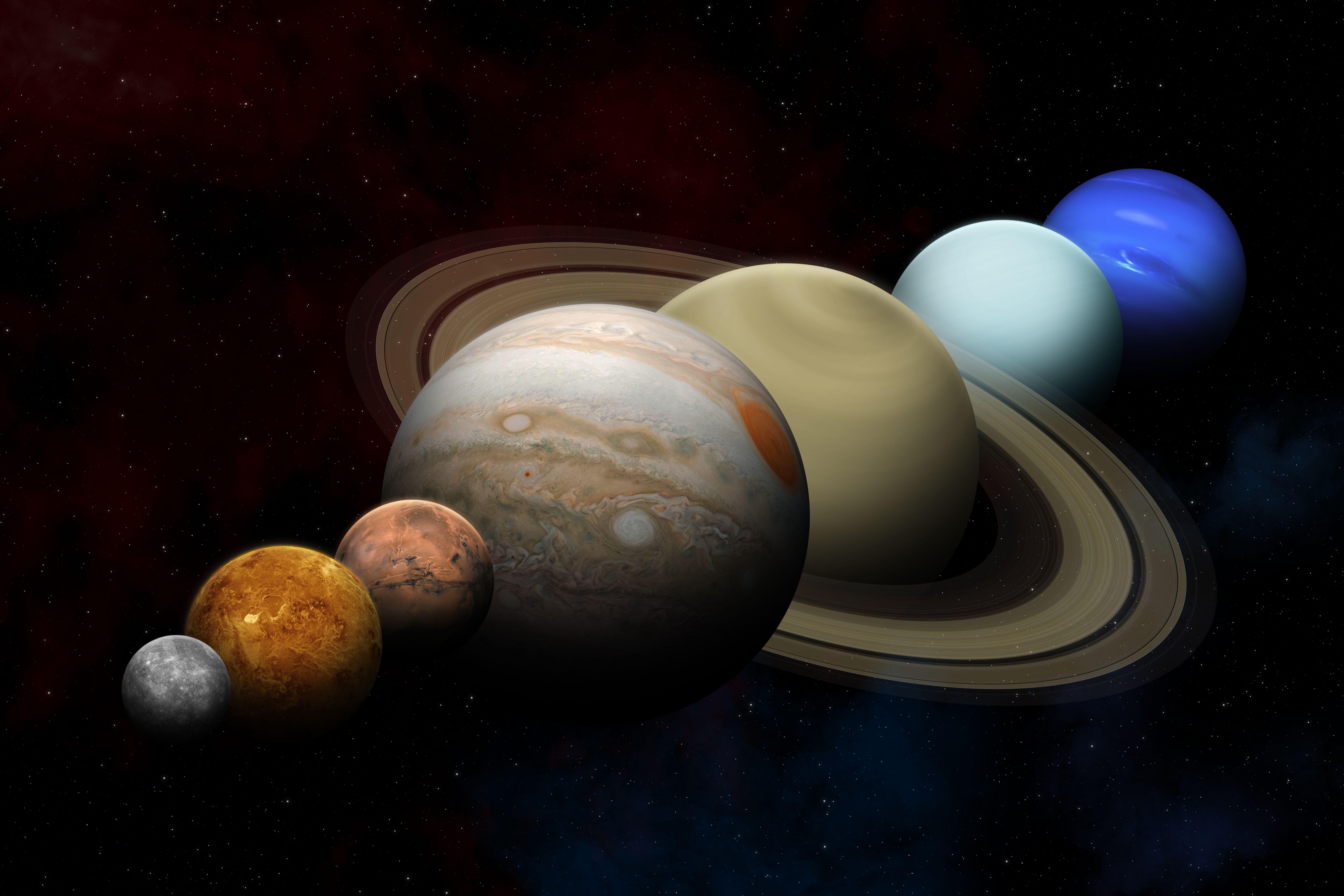All seven planets are going to line up in the night sky on Friday in a rare planetary parade that will not be repeated for another 15 years.
The celestial display will see Mars, Jupiter, Uranus, Venus, Neptune, Mercury, and Saturn to appear at the same time – weather permitting – between sunset and 6:30pm on 28 February.
This is expected to be the last time all seven planets will align in such a way until 2040, so keen stargazers are advised to set a reminder to catch the cosmic event.
We’ve spoken to expert astronomers who’ve broken down the science behind this rare alignment and have shared some top tips to help you make the most of this magical planetary parade.
What is a planetary parade?
“A planetary parade is a moment when multiple planets are visible in the sky at the same time,” says Dr Greg Brown, astronomer at Royal Observatory Greenwich. “How impressive a parade it is will depend on how many planets are in it and how visible they are.”
This week, all seven planets are technically visible in the sky at once, though they are not all equally easy to spot.

“Mercury, Neptune and Saturn are all very close to the horizon in the early evening and, particularly in the case of Neptune and Saturn, will struggle to be seen in the twilight,” notes Brown. “In addition, Uranus, like Neptune, is very faint, making it almost impossible to find without a pair of binoculars or a telescope.
“Venus, Jupiter and Mars, however, are all very easy to see with the unaided eye.”
How common is it?
“Groups of three, four or even five planets being visible aren’t uncommon, regularly appearing throughout each year,” says Brown. “But, the more planets are involved, the more things need to be aligned to be visible at once. This makes full seven-planet parades fairly rare.”
Why does this happen?
“Planetary alignments occur because the planets in our solar system orbit the Sun within roughly the same plane, known as the ecliptic plane,” explains Dr Shyam Balaji, researcher in astroparticle physics and cosmology at King’s College London. “As they orbit at different speeds and distances from the Sun, there are moments when they appear to line up from earth’s perspective.”
When will be the best time to spot it?
“The alignment is expected to be visible from February 23 to February 28, 2025,” says Balaji. “But the peak viewing opportunity is on February 28, shortly after sunset, when the planets will be positioned above the western horizon.”
Will the weather affect this?
“The night will need to be clear of clouds across much of the sky to spot all of the planets,” says Brown. “When looking through a telescope or binoculars it will also help if the night is still, with little in the way of wind, as that will make features on the planets like the bands on Jupiter or the poles of Mars far easier to spot.”
Five tips to maximise your chances of seeing the celestial event
1. Find a location away from city lights
“The lower the light pollution, the easier it is to see faint objects in the night sky, so being out in the countryside will be a plus,” says Brown.
2. Consider using binoculars or a small telescope
“Finding Mars, Jupiter and Venus will be no trouble at all, visible to the unaided eye shortly after sunset, but finding any of the other will likely require a pair of binoculars or a telescope,” highlights Brown.
3. Wait for the sun to set
“If you do go looking for Saturn, Neptune or Mercury with a telescope or binoculars, wait for the sun to set to avoid looking directly at it,” advises Brown. “But once it has set, don’t hang around, as all three disappear below the horizon very soon after sunset.”
4. Use a smartphone adaptor
“Consider a smartphone adaptor for your telescope that enables you to take an image of exactly what you would see with your eye when looking into the eyepiece,” suggests Brown.
5. Look for moon shapes
“Using a telescope, try looking for the moons of Jupiter or the shape of the illuminated part of Venus’s surface – like a tiny crescent moon,” recommends Brown.
When will the next planetary parade be?
The next occurrence of five or more planets appearing at the same time will be 2028, while six planets will line up in 2034.
A planetary parade of seven planets will then take place in 2040.
Additional reporting from agencies.

